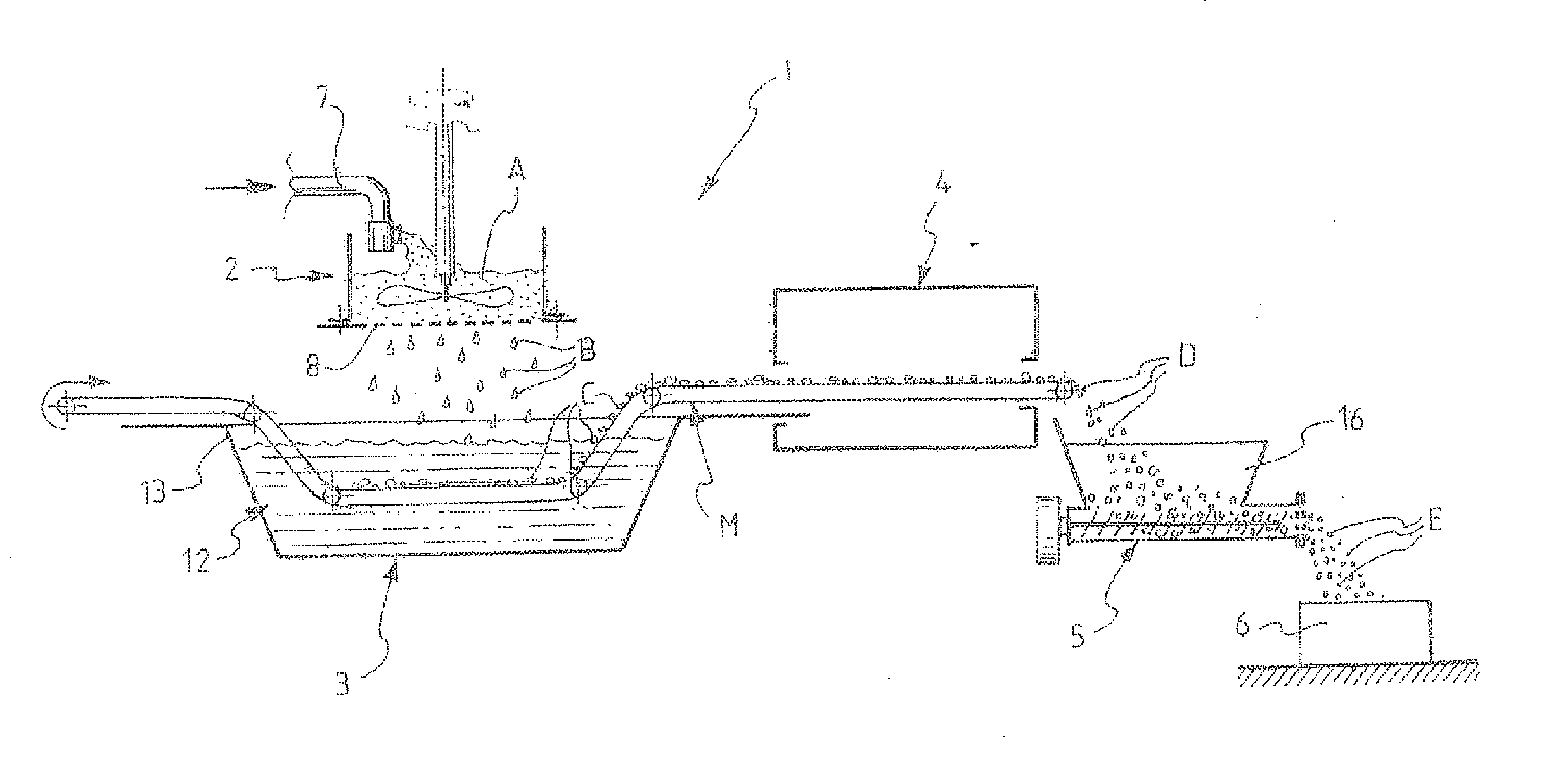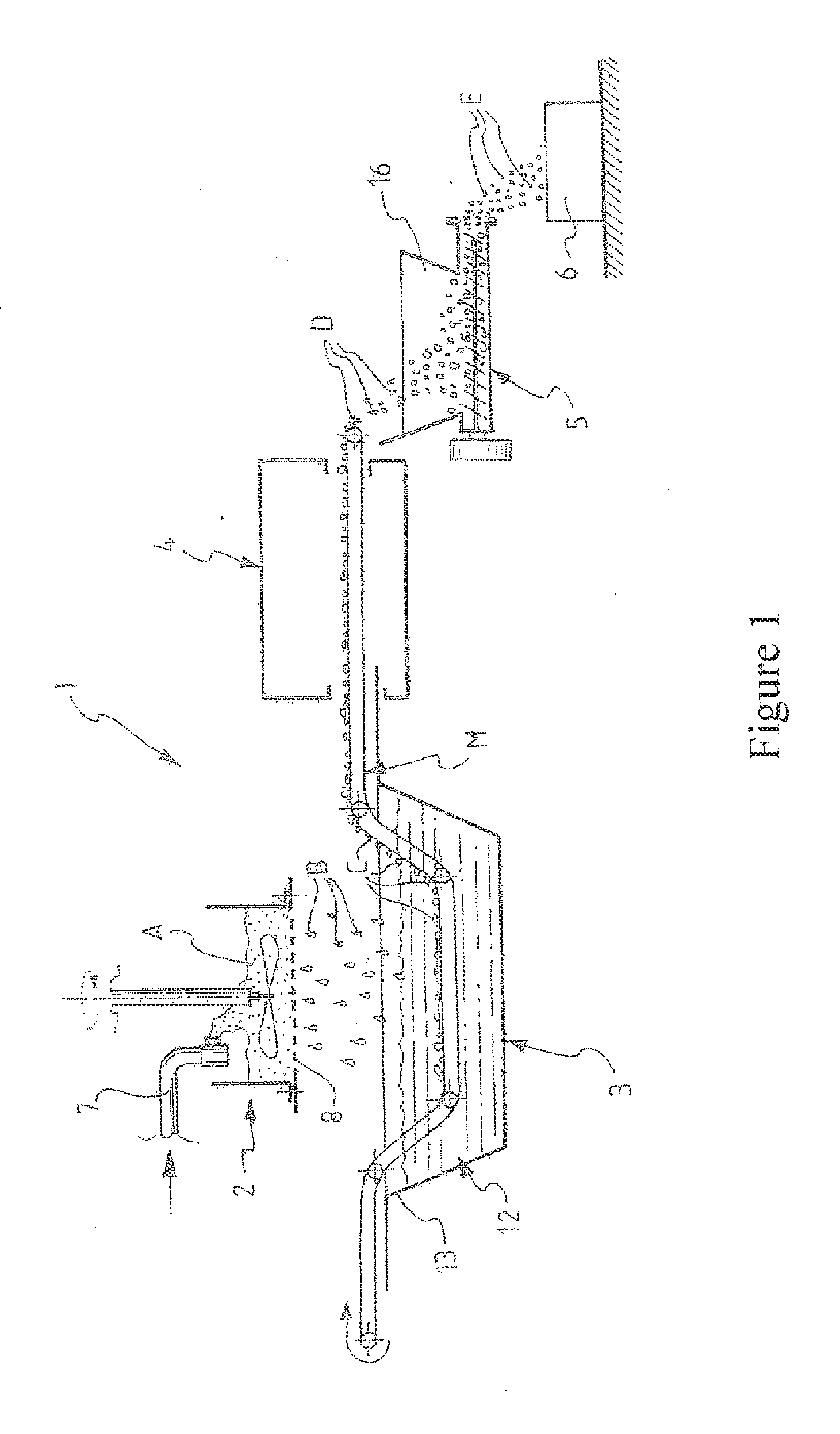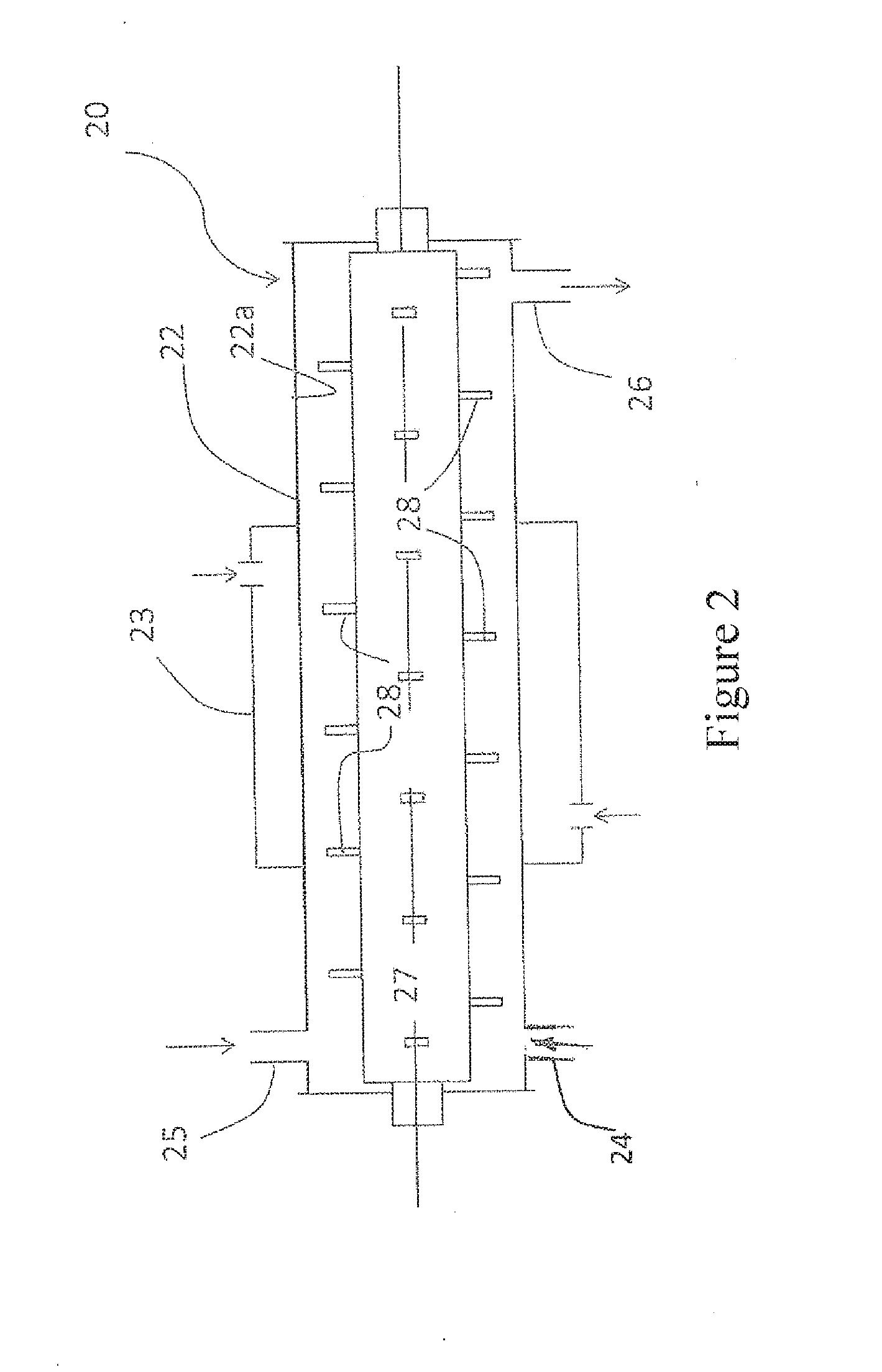Frozen ready-made polenta and process for the preparation thereof
- Summary
- Abstract
- Description
- Claims
- Application Information
AI Technical Summary
Benefits of technology
Problems solved by technology
Method used
Image
Examples
example 1
Preparation of a Soft Polenta
[0189]A composition of dry corn meal and salt was prepared in the proportions (% p / p) indicated below in Table 1.
TABLE 1Proportions of the components of the compositionfor preparation of a soft polentaIngredient% (p / p)Corn meal97Salt3Total100
[0190]A flow of the aforementioned composition indicated in the table above was fed to the turbo-cooker of the type described above at the same time as feeding of a flow of water heated mainly to 85° C. The respective flow rates of the two flows were regulated to obtain a polenta pre-mix inside the turbo-cooker formed by 29% corn meal, 68% water and 3% salt. The bladed rotor of the turbo-cooker was operated at a peripheral speed of 20 m / s for a cooking time of 90 seconds at a temperature of the inner wall of the turbo-cooker equal to 140° C.
[0191]At the end of cooking, the cooked polenta was discharged from the discharge opening 26.
[0192]The cooked polenta thus obtained had organoleptic characteristics comparable to ...
example 2
Production of Granules of Frozen Ready-Made Polenta
[0194]The cooked polenta output from the turbo-cooker according to Example 1 was first air-cooled to a temperature of 60° C. and then fed into a doser of the type described above.
[0195]In particular, using a perforated plate provided with circular through-holes having a 7 mm diameter, semifinished products of polenta in the form of beads with a diameter of about 8 mm were obtained, said beads falling by mean of gravity into a first deep-freezing section and in particular into a liquid nitrogen bath (at the temperature of −197° C.).
[0196]The semifinished polenta products in the liquid nitrogen bath underwent rapid deep-freezing of the outer surface with consequent hardening thereof and the formation of partially deep-frozen granules having a frozen outer crust and a core which was not completely frozen.
[0197]Then the partially deep-frozen granules of polenta were collected on a conveyor belt partially immersed in the body of nitrogen...
example 3
Production of Granules of Frozen Ready-Made Polenta
[0200]The cooked polenta output from the turbo-cooker according to Example 1 was first air-cooled to a temperature of 40° C. and then fed into a plant of the type described above for the production of frozen ready-made polenta.
[0201]In particular, using a plate provided with slots having a width of 2 mm and length of 15 mm, polenta flakes with a greater dimension of about 60 mm were obtained, said flakes falling by means of gravity into a first deep-freezing section and in particular into a liquid nitrogen bath (at a temperature of −197° C.).
[0202]The polenta flakes in the liquid nitrogen bath underwent rapid deep-freezing of the outer surface with consequent hardening thereof and the formation of partially deep-frozen granules having a frozen outer crust and a core which was not completely frozen.
[0203]Then the partially deep-frozen granules of polenta were collected on a conveyor belt partially immersed in the nitrogen body.
[0204]...
PUM
 Login to View More
Login to View More Abstract
Description
Claims
Application Information
 Login to View More
Login to View More - R&D
- Intellectual Property
- Life Sciences
- Materials
- Tech Scout
- Unparalleled Data Quality
- Higher Quality Content
- 60% Fewer Hallucinations
Browse by: Latest US Patents, China's latest patents, Technical Efficacy Thesaurus, Application Domain, Technology Topic, Popular Technical Reports.
© 2025 PatSnap. All rights reserved.Legal|Privacy policy|Modern Slavery Act Transparency Statement|Sitemap|About US| Contact US: help@patsnap.com



